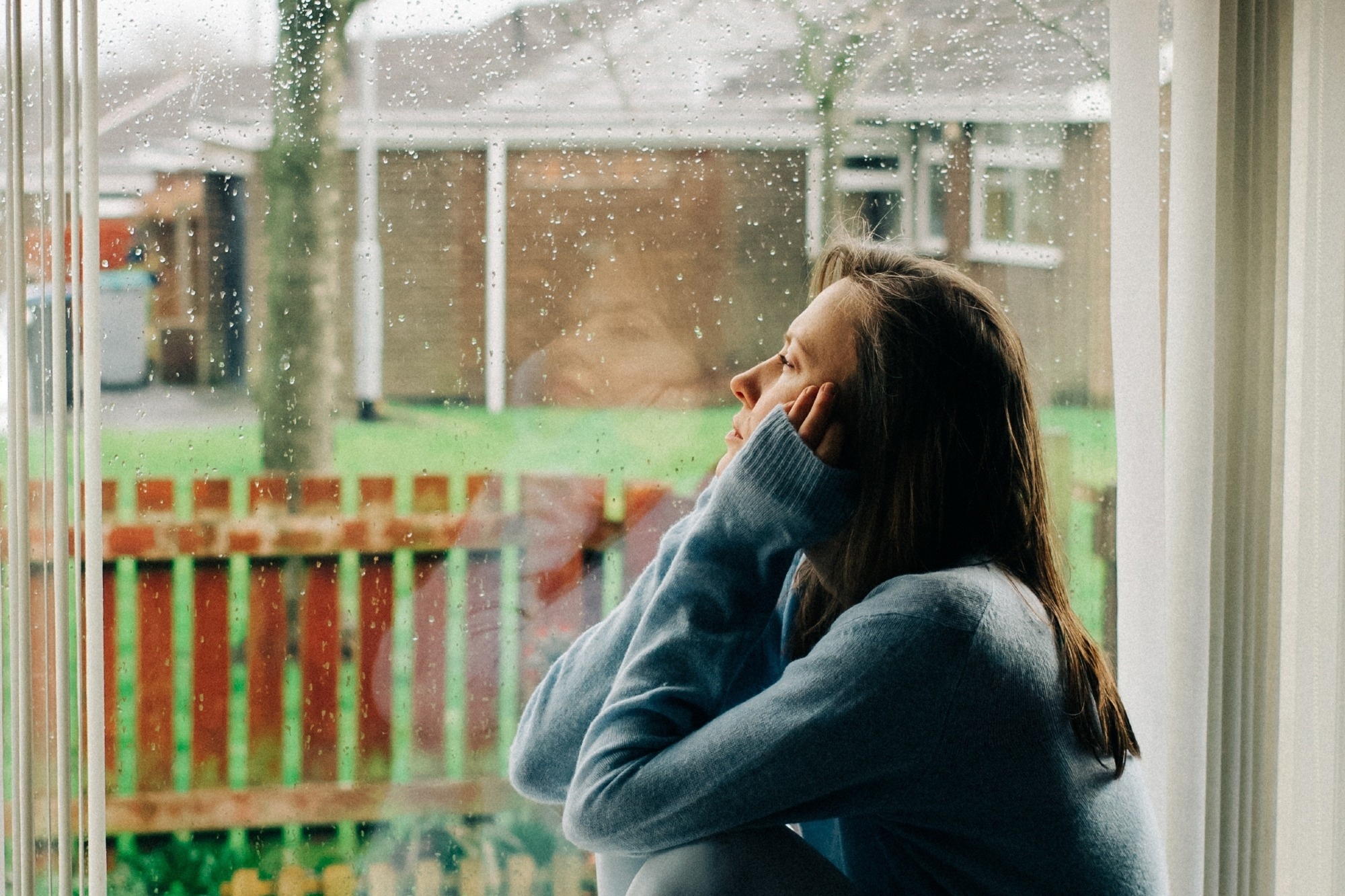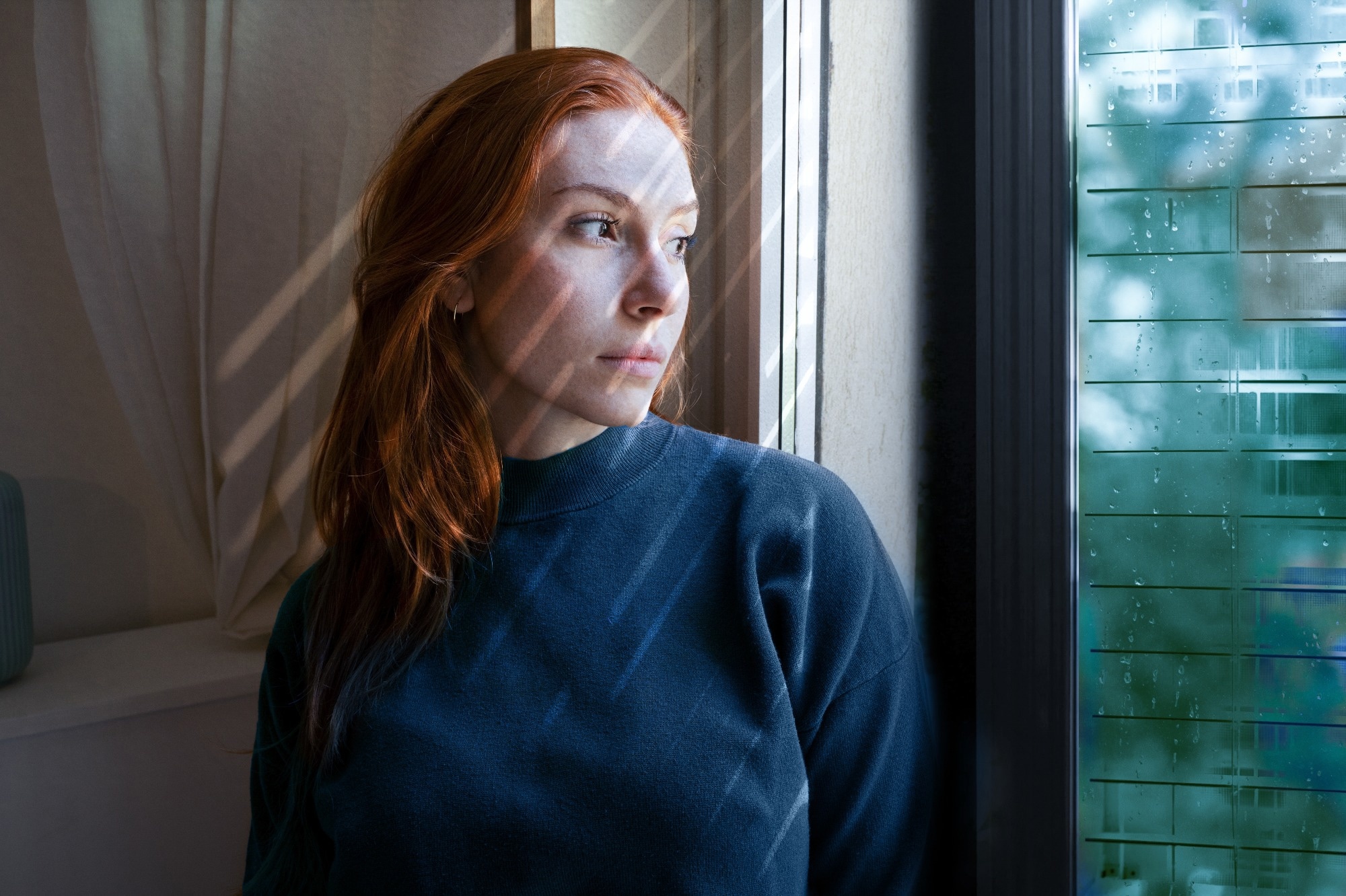What Is seasonal affective disorder (SAD)?
Understanding the mechanisms
Who does SAD affect?
The impact of seasons
Managing SAD
Lifestyle choices
References
Further reading
Engaging in an in-depth exploration of Seasonal Affective Disorder (SAD), also known as the “January Blues”, this article seeks to elucidate the underpinnings of Winter Depression.
It provides comprehensive insights into the causes, symptoms, prevalence and current treatments of this seasonal psychological condition.
 Image Credit: SunCity/Shutterstock.com
Image Credit: SunCity/Shutterstock.com
Seasonal Affective Disorder (SAD), also known as 'January Blues', is a seasonal mood disorder that occurs during the changing of seasons.1 It is predominantly observed in the transition from fall to winter and causes significant mental distress for those affected. 1
Unlike other mood disorders, SAD is primarily caused by the cyclical transitions of the seasons throughout the year. 1 Research suggests that changes in sunlight exposure are the primary cause of SAD. 1
It is hypothesized that lower levels of sunlight in winter may disrupt an individual's circadian rhythm, the innate 'biological clock' governing a multitude of body functions, thereby initiating the pathological processes of SAD. 1
Research on seasonal affective disorder (SAD) suggests that a lack of sunlight during fall and winter months can lead to depressive symptoms.1 This is due to the impact of diminished sunlight on circadian rhythms, as well as the regulation of neurotransmitters like serotonin and hormones like melatonin.1
As the days get shorter in autumn and winter, there is less sunlight, which can disrupt circadian rhythms.1 These rhythms are integral to regulating numerous physiological processes, including sleep and mood.1
They are essentially our internal body clocks, governing our biological patterns in a 24-hour cycle. Disruptions to these rhythms can lead to alterations in mood and energy levels, often resulting in symptoms of SAD.1
Furthermore, it is believed that the decrease in sunlight affects two crucial molecules that regulate mood: serotonin and melatonin.2 Serotonin, which is commonly known as the 'feel good' hormone, plays a vital role in maintaining mood balance.
Studies suggest that reduced sunlight exposure can lead to a decrease in serotonin levels due to an increase in SERT expression, a protein that transports serotonin, which can ultimately result in lower serotonin availability.2
Concurrently, during the darker months, the production of melatonin, a hormone that helps regulate sleep, also increases.2 This spike in melatonin disrupts sleep patterns and contributes to feelings of lethargy, further aggravating symptoms of SAD.2
The data shows that Winter Depression is more prevalent in women than in men, with women being up to twice as likely to be diagnosed with the condition.1 Additionally, SAD usually begins in early adulthood, with a higher risk and severity observed in individuals under 30 years old.1
It is important to note that about 20% of people with SAD have a close relative with the condition, and it is more common in people with major depressive disorder or bipolar disorder.3
SAD displays a wide range of symptoms that significantly overlap with major unipolar depression.4 However, a crucial difference is its seasonal pattern. The most frequently reported symptoms of SAD include persistent low mood, marked anhedonia, feelings of guilt or low self-worth, disturbed sleep, changes in appetite, and low energy.4
Individuals with the January Blues often experience winter depression symptoms such as increased sleep and appetite and weight gain, which contradict the typical features of non-seasonal major depression.3
It is important to understand the prevalence and impact of SAD, as studies have shown that people suffering from SAD may experience significant impairments in their quality of life.2 It has been linked to limitations in work performance, decreased cognitive abilities, and increased healthcare utilization.2
Understanding Seasonal Affective Disorder (SAD)
The impact of seasons
Reflecting on global patterns of SAD prevalence, data shows a correlation between latitude and its prevalence, which increases as people live further from the equator.1
Regions closer to the equator report lower cases of SAD, which are associated with longer periods of sunlight and less pronounced seasonal variations in day length.1
Regions with colder climates often report higher cases of SAD. This is due to extended periods of limited light exposure and an indoor lifestyle.5 However, SAD may also occur during the summer months, although it is less common.6
This suggests that the relationship between seasons and mental health is complex.6
The management of SAD involves various techniques, including phototherapy, pharmacotherapy, and psychotherapy.4
One of the treatments used is light therapy, which aims to replicate the environmental conditions of non-winter months.4
This treatment involves using a specially designed light box that emits bright light and exposing the individual to it for at least 20 minutes a day, usually in the morning.4
Psychotherapy, specifically cognitive behavior therapy, is an effective treatment for SAD.7 Bupropion, including Aplenzin and Wellbutrin, is the most commonly used antidepressant to treat SAD.8
Additionally, Vitamin D supplements are often prescribed for SAD patients because the body's ability to produce it depends on exposure to UVB light.8
 Image Credit: F01 PHOTO/Shutterstock.com
Image Credit: F01 PHOTO/Shutterstock.com
Lifestyle choices
Seasonal variations can significantly affect the onset and severity of SAD. Evidence suggests that lifestyle choices, such as diet, exercise, and sleep patterns, can also modulate the symptoms of this condition.9
Certain dietary components can impact the biochemical balance in the brain, influencing mood and cognition and thus exacerbating or mitigating depression symptoms.10
For example, a diet that is rich in omega-3 fatty acids has a protective effect because it modulates proinflammatory cytokines and their effects on the central nervous system.10
Similarly, regular exercise generates antidepressant effects by enhancing the release of endorphins and increasing neurogenesis in specific areas of the brain.9,11
Adequate sleep also plays a significant role in the manifestation of SAD. Restoring the circadian rhythm by ensuring a proper sleep schedule can alleviate its symptoms.9
In conclusion, although the biological causes of SAD are still being researched, evidence suggests that incorporating lifestyle changes can be a useful addition to standard therapeutic interventions.
References
- Roecklein KA, et al. (2005). Seasonal affective disorder: an overview and update. Psychiatry (Edgmont), 2(1), 20-26. PMID: 21179639; PMCID: PMC3004726.
- Melrose S. (2015). Seasonal Affective Disorder: An Overview of Assessment and Treatment Approaches. Depression Research and Treatment, 2015: 178564. doi: 10.1155/2015/178564.
- Roecklein KA, et al. (2010). Is seasonal affective disorder a bipolar variant? Current Psychiatry, 9(2), 42-54. PMID: 20495687; PMCID: PMC2874241.
- Seasonal affective disorder (SAD). Psychiatry.org - Seasonal Affective Disorder (SAD). (n.d.). [online] https://www.psychiatry.org/patients-families/seasonal-affective-disorder
- Molin J, et al. (1996) The influence of climate on development of winter depression. J Affect Disord. 37(2-3):151-5. doi: 10.1016/0165-0327(95)00090-9. PMID: 8731078.
- Seasonal affective disorder. Johns Hopkins Medicine. (n.d.). [online] https://www.hopkinsmedicine.org/health/conditions-and-diseases/seasonal-affective-disorder
- What is psychotherapy?. Psychiatry.org - What is Psychotherapy? (n.d.). [online] https://www.psychiatry.org/patients-families/psychotherapy
- Nussbaumer-Streit B, et al. (2021) Second-generation antidepressants for treatment of seasonal affective disorder. Cochrane Database Syst Rev. 3(3):CD008591. doi: 10.1002/14651858.CD008591.pub3. PMID: 33661528; PMCID: PMC8092631.
- Zhao, Y., et al. (2023) The brain structure, immunometabolic and genetic mechanisms underlying the association between lifestyle and depression. Nat. Mental Health.1, 736–750. doi: https://doi.org/10.1038/s44220-023-00120-1
- Logan AC. (2004) Omega-3 fatty acids and major depression: a primer for the mental health professional. Lipids Health Dis. 3:25. doi: 10.1186/1476-511X-3-25. PMID: 15535884; PMCID: PMC533861.
- Liu PZ, et al. (2018) Exercise-Mediated Neurogenesis in the Hippocampus via BDNF. Front Neurosci. 12:52. doi: 10.3389/fnins.2018.00052. PMID: 29467613; PMCID: PMC5808288.
Further reading
Last Updated: Feb 6, 2024